Aeneas’ Travels – Aeneae Troiani Navigatio
A unique map in the footsteps of Vergilius (ca. 70 BC – 19 BC)
Detail
Date of first edition: 1595
Date of this map: 1601 (version in Latin)
Dimensions (not including margins): 34,5 x 49,5 cm
Condition: excellent. Sharp copper engraving printed on strong paper. Centre fold is as published. Old coloured. Wide margins.
Condition rating: A+
Map reference: Van den Broecke 223; Van der Krogt 2, 0311H:31
From: Theatrum Orbis Terrarum Abrahami Ortelii Antverp. Geographi Regii. Plantin Press1601. Van der Krogt 3, 1:052
In stock
Ortelius and Aeneas
In the cartouche (top right) Ortelius dedicates this map to Balthasar Robianus:
“In memory of his friendship, Abraham Ortelius dedicated this map to the honourable and famous Balthasar Robianus from the republic of Antwerp, known for his learnedness and spiritual and cultural qualities, treasurer for his physical and mental qualities.”
Note that Ortelius referred to the repûblic of Antwerp (in 1595) when the city was in firm royal and Spanish hands.
Related items
-
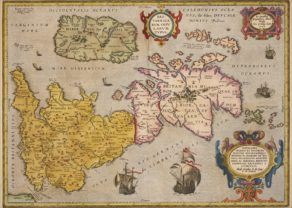
Ancient British Isles – Britannicarum Insularum Typus
by Abraham OrteliusPrice (without VAT, possibly to be added): €900,00 / $999,00 / £801,00 -
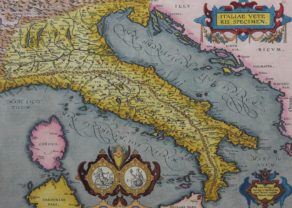
Ancient Italy – Italiae Veteris Specimen
by Abraham OrteliusPrice (without VAT, possibly to be added): €1 000,00 / $1 110,00 / £890,00 -
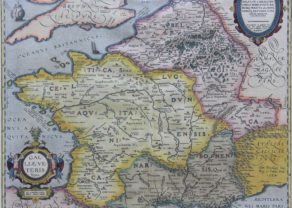
Ancient France or Gaul – Galliae Veteris
by Abraham OrteliusPrice (without VAT, possibly to be added): €450,00 / $499,50 / £400,50
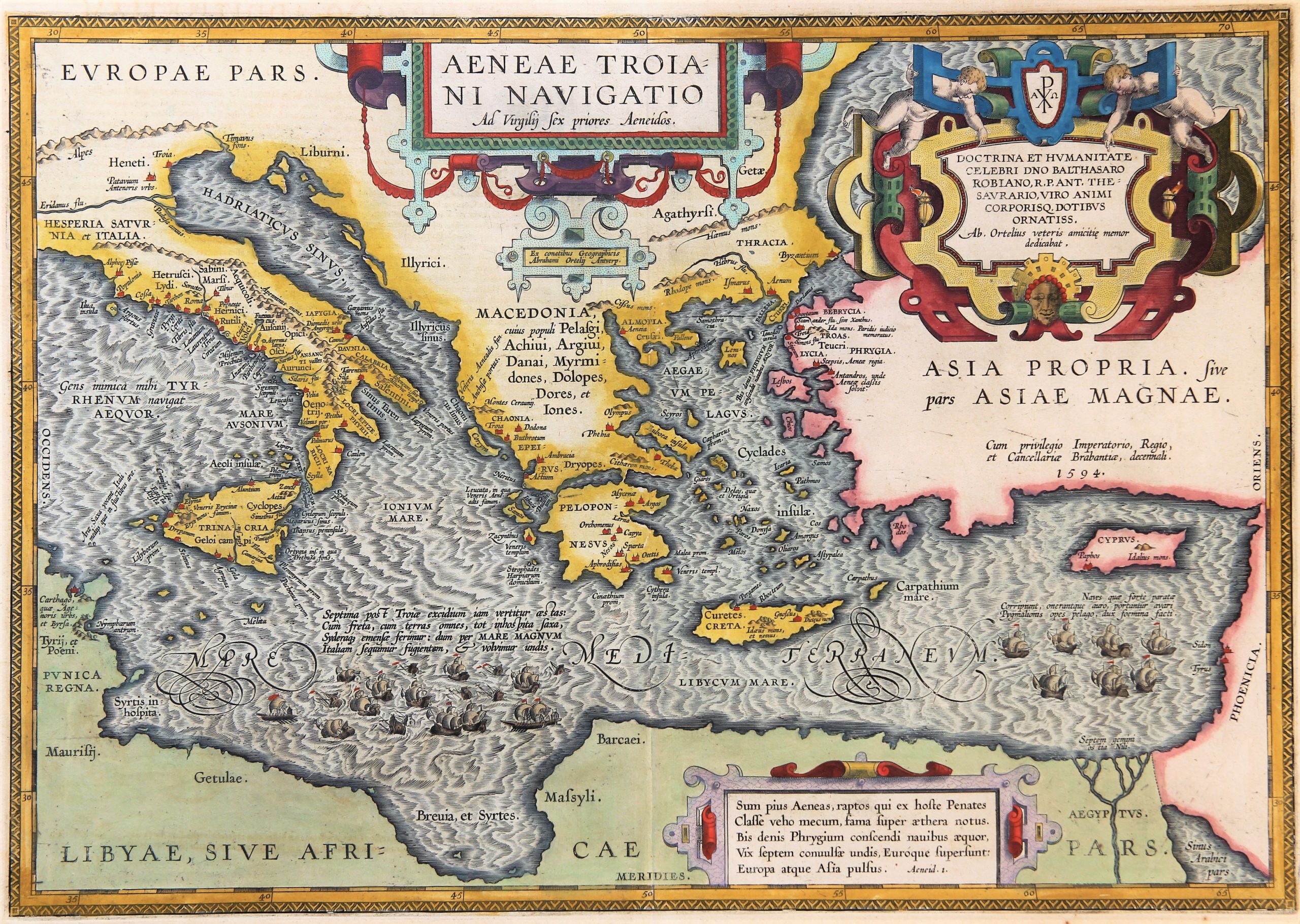
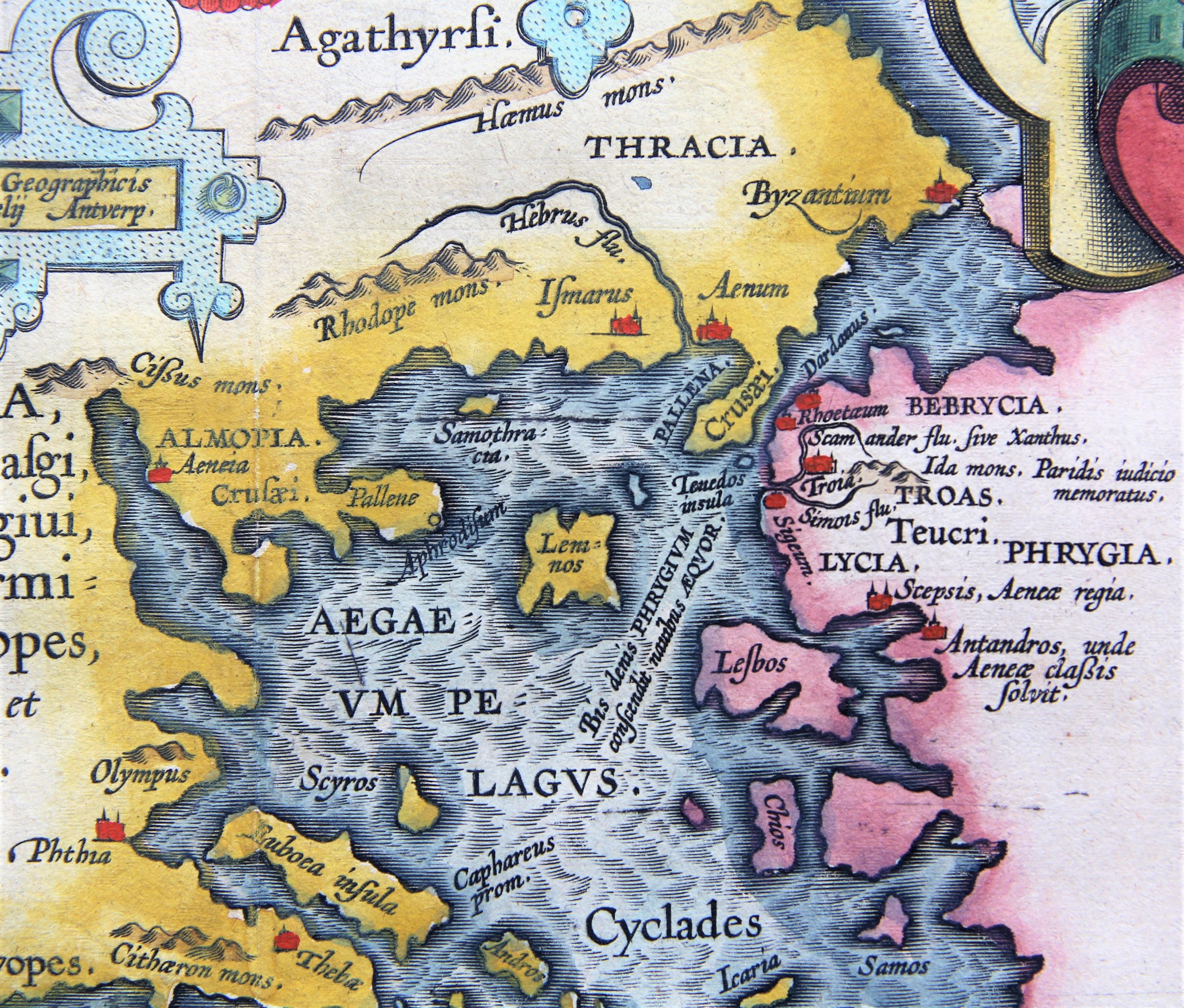
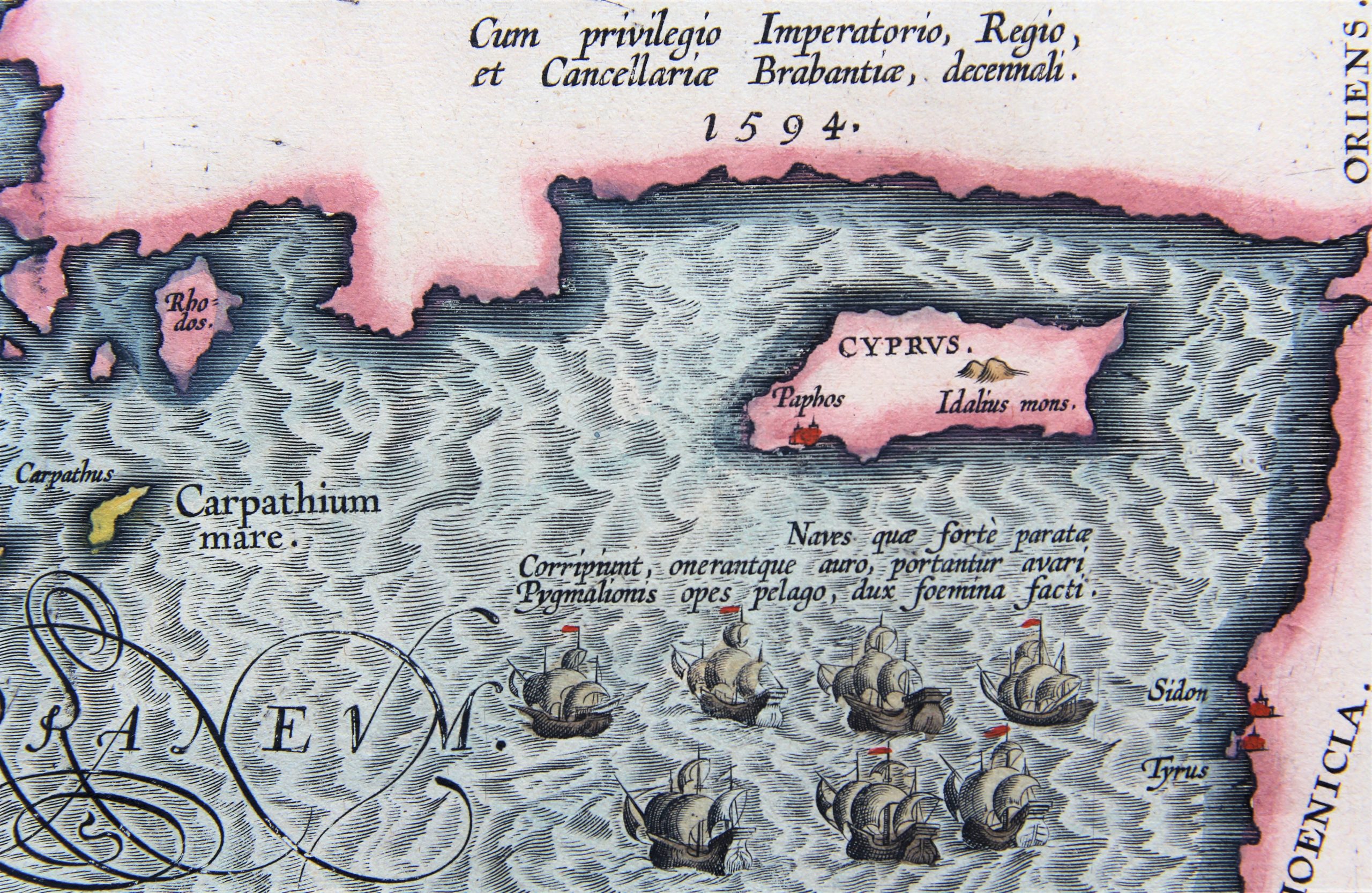
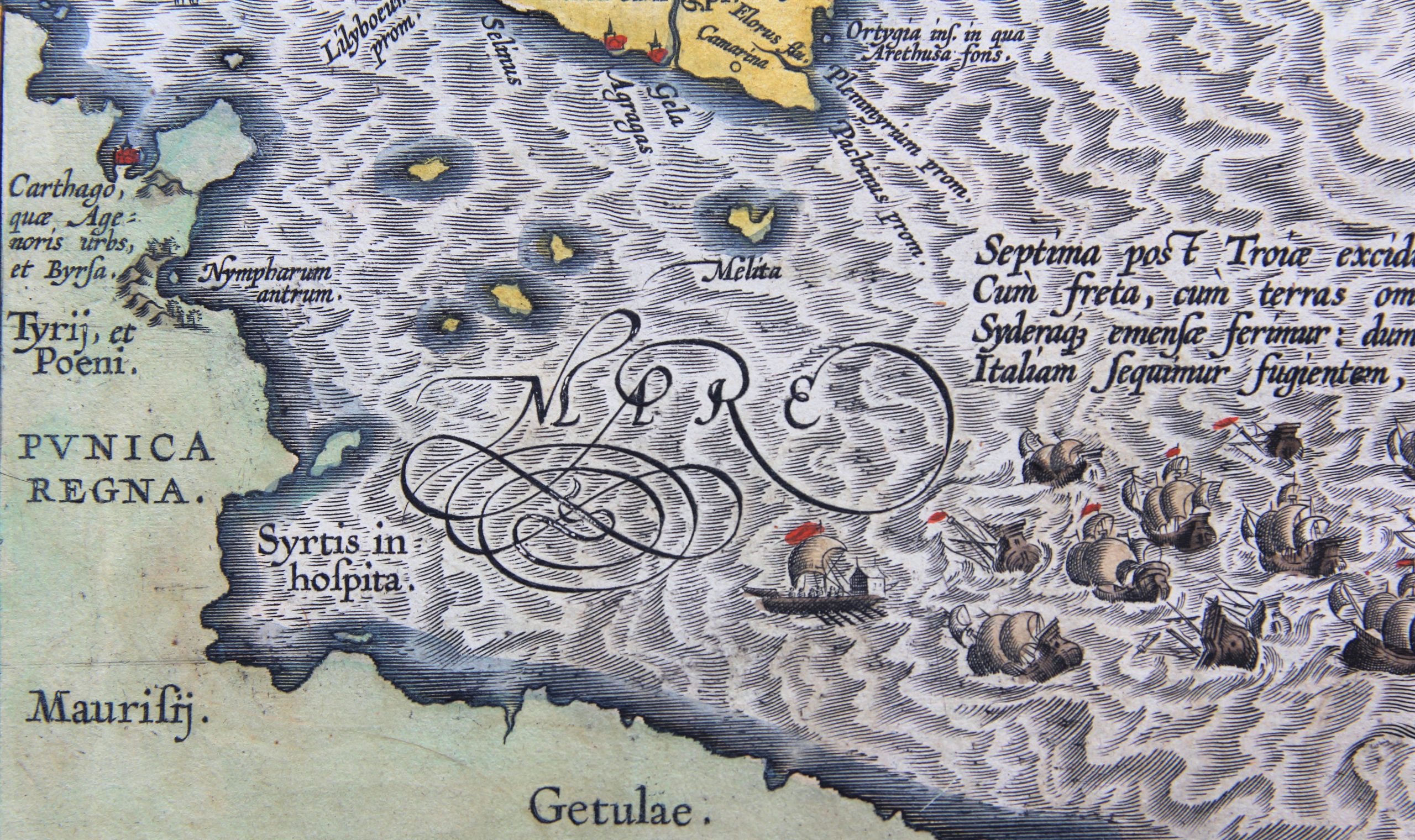
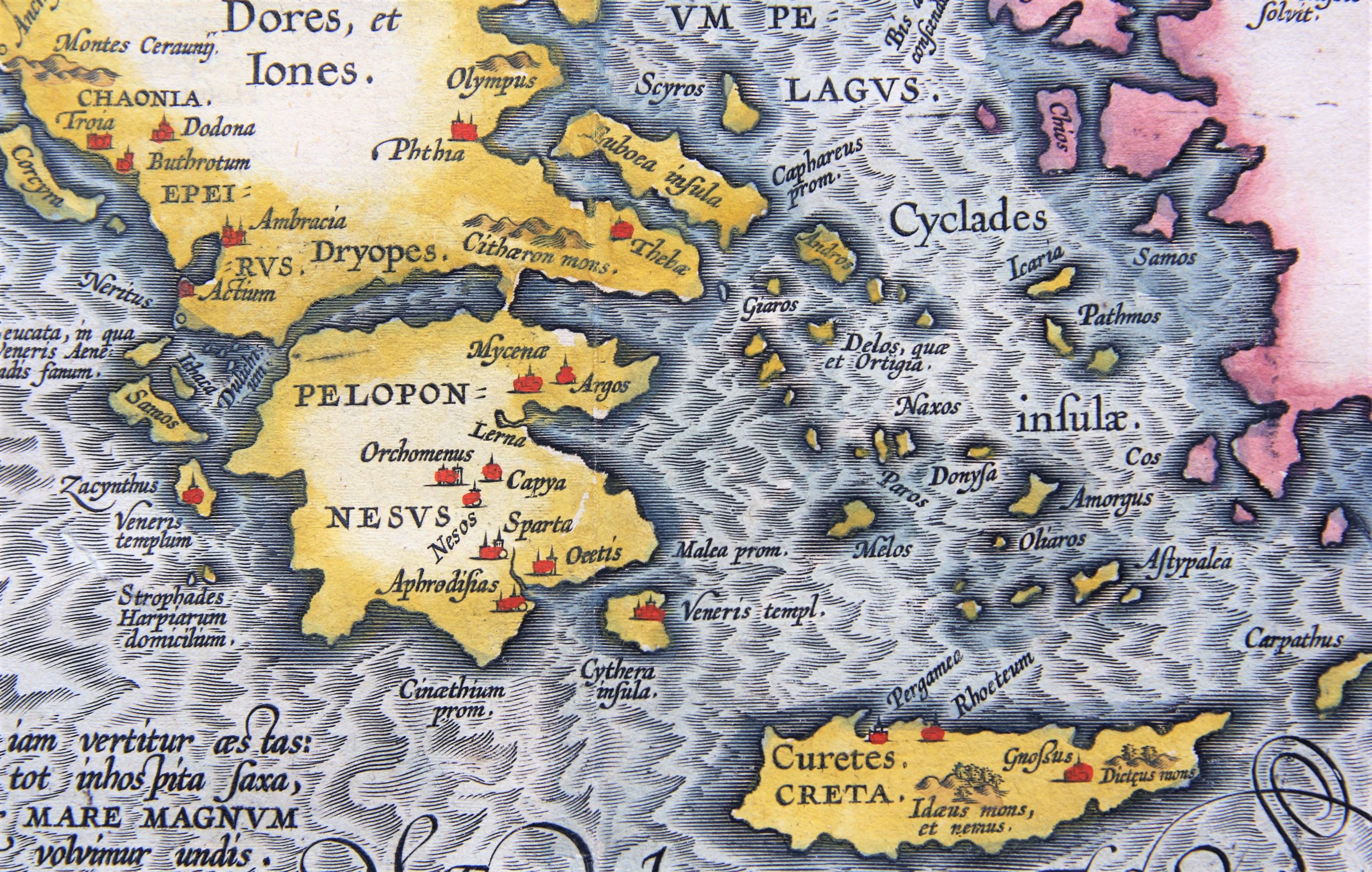
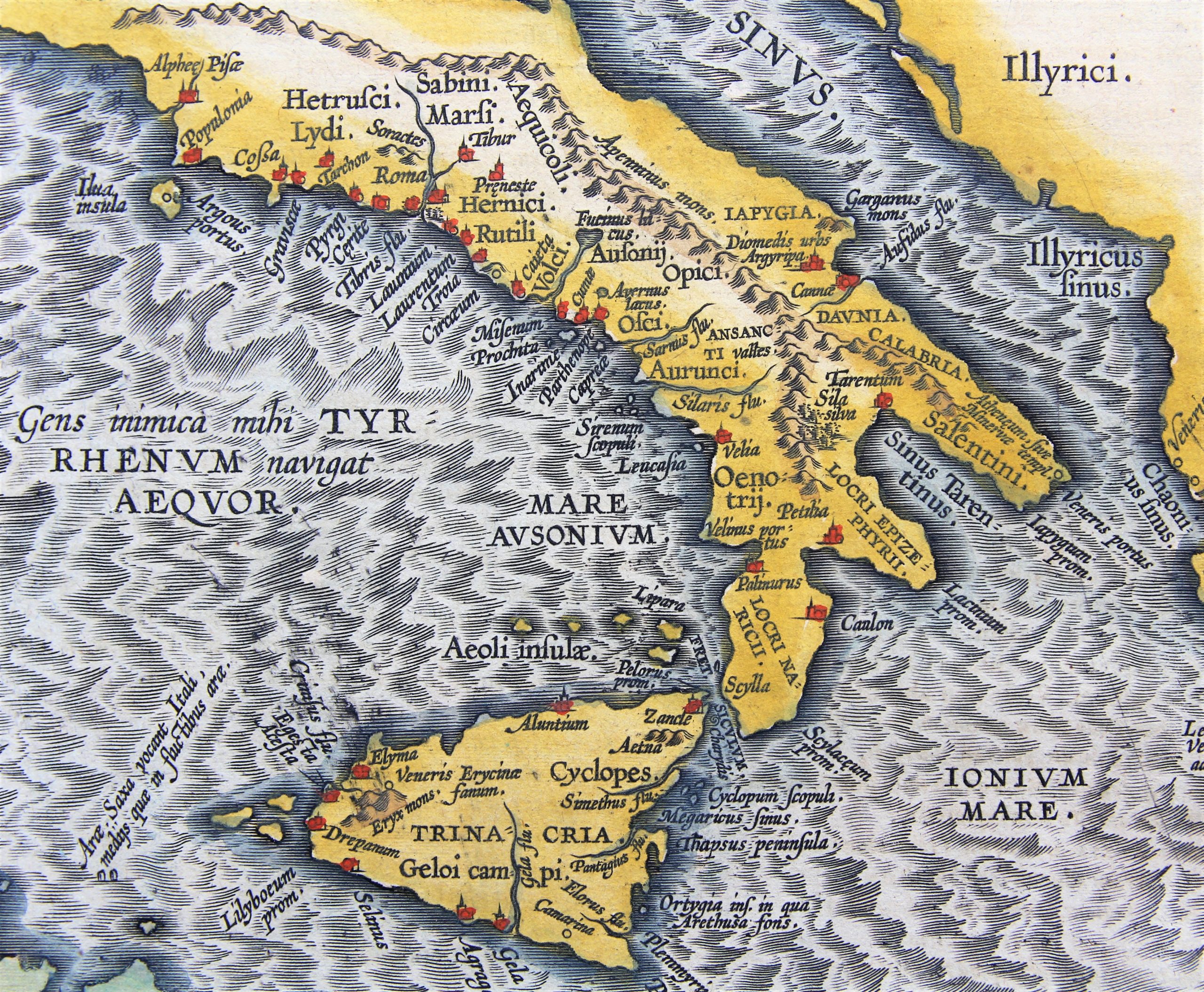
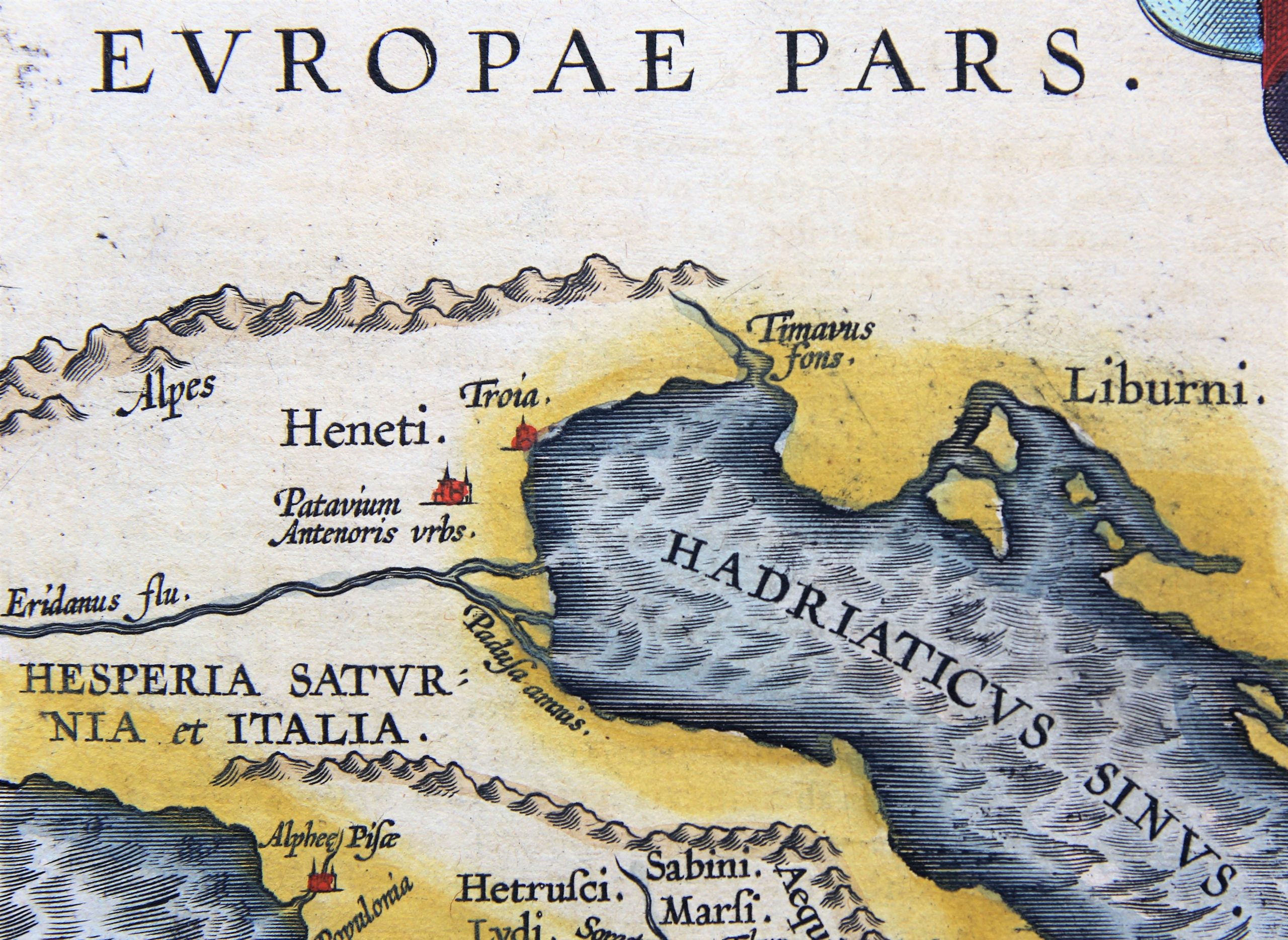
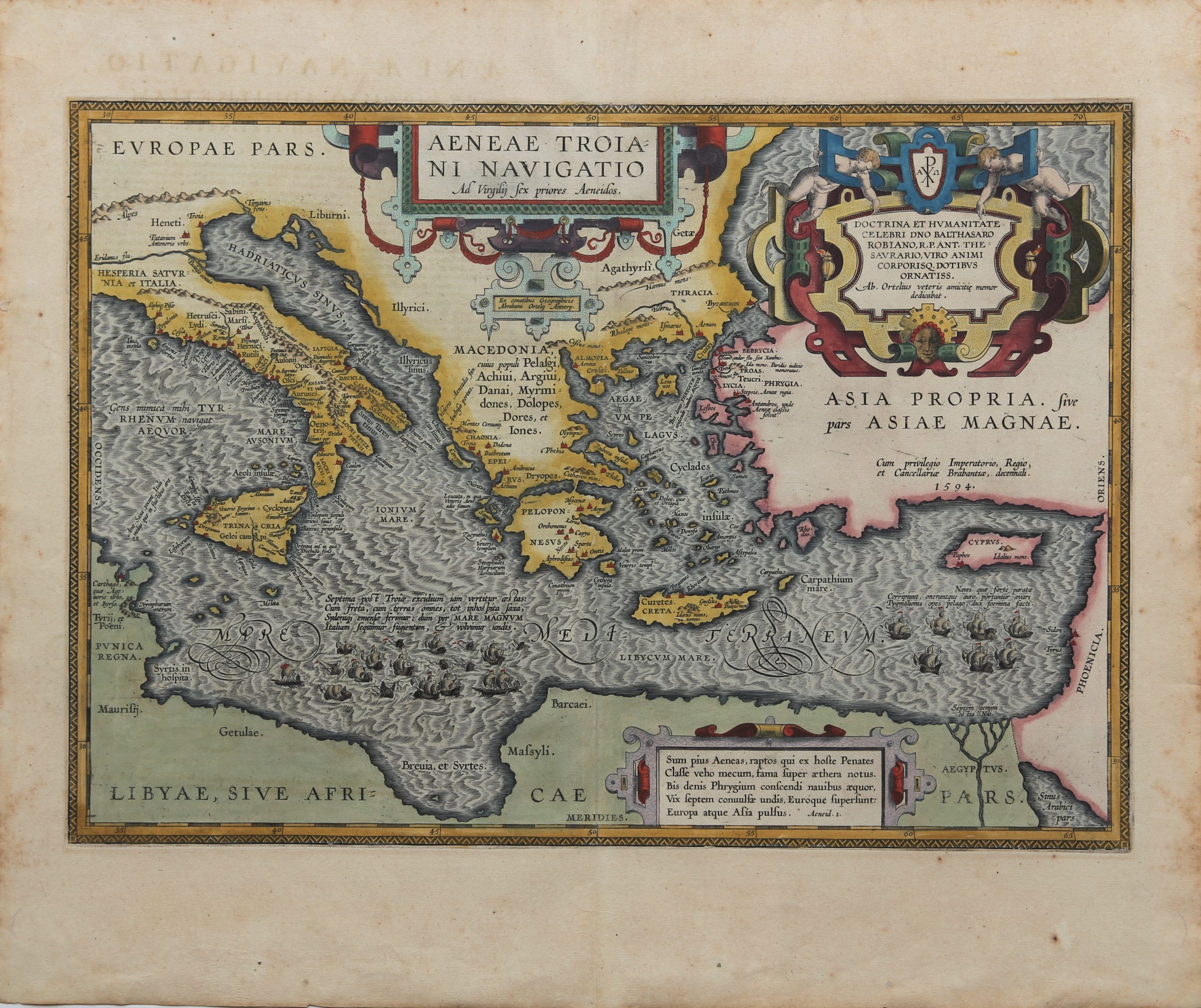
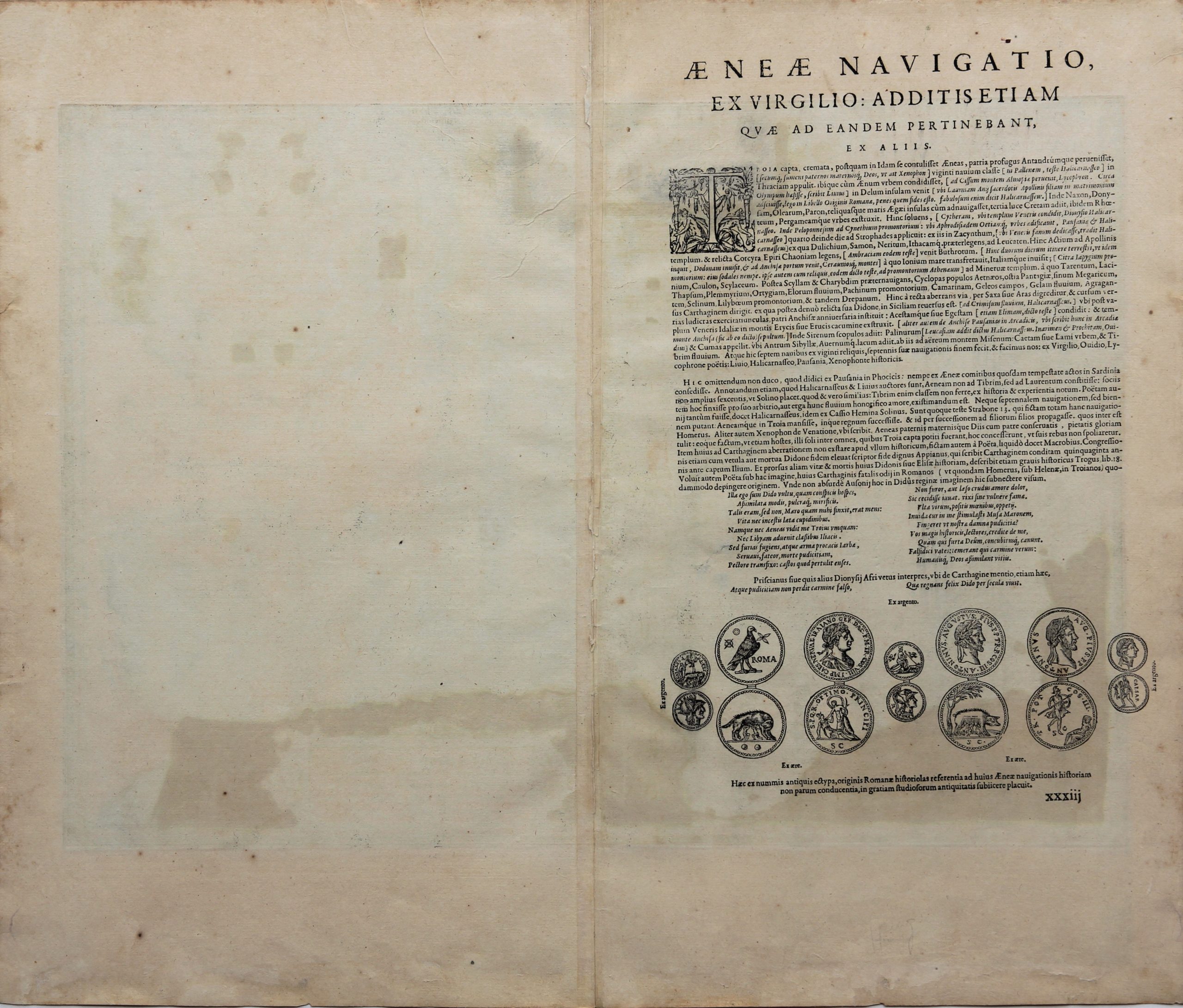

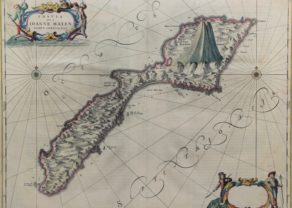
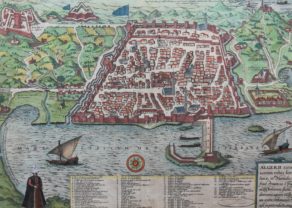
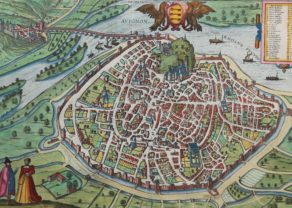
The Aeneis or Virgil’s masterpiece
The Aeneid or Aeneis is a Latin epic poem, written by Virgil between 29 and 19 BC, that tells the legendary story of Aeneas, a Trojan who traveled to Italy, where he became the ancestor of the Romans. The first six of the poem’s twelve books tell the story of Aeneas’s wanderings from Troy to Italy, and the poem’s second half tells of the Trojans’ ultimately victorious war upon the Latins, under whose name Aeneas and his Trojan followers are destined to be subsumed.
The hero Aeneas was already known to Greco-Roman legend and myth, having been a character in the Iliad (by Homer). Virgil took the disconnected tales of Aeneas’s wanderings, his vague association with the foundation of Rome and he fashioned the Aeneid into a compelling founding myth or national epic that tied Rome to the legends of Troy, explained the Punic Wars, glorified traditional Roman virtues, and legitimized the Julio-Claudian dynasty as descendants of the founders, heroes, and gods of Rome and Troy.
The Aeneid is widely regarded as Virgil’s masterpiece and one of the greatest works of Latin literature.
Before Virgil also Xenophon, Ovisius and Lycophron reported on Aeneas’ travels.
At Carthage Aeneas meets Dido:
Painting by Thomas Jones (26 September 1742 – 29 April 1803), a Welsh landscape painter.